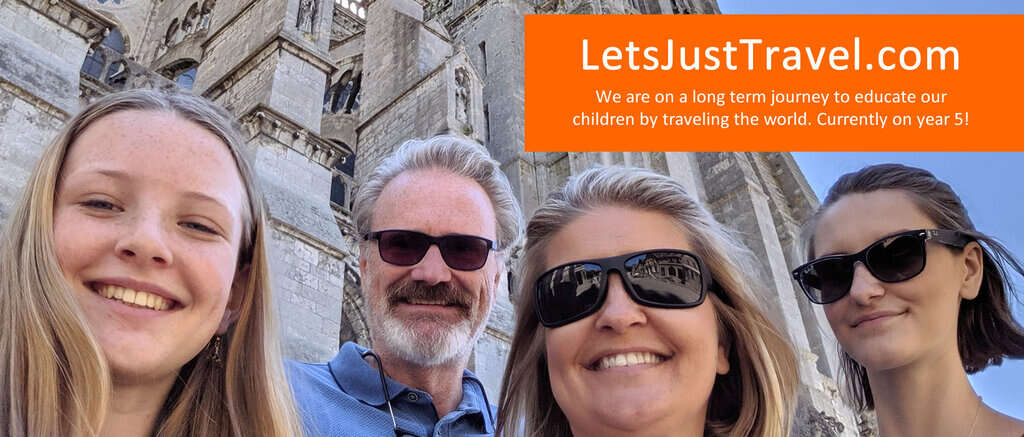One of the things we missed a lot while living in Medellin was the opportunity for road trips. That, and the ocean. The DR does not disappoint on either of those!
After barely a week in our comfy apartment, we packed up some unsurprisingly unenthusiastic niñas, hopped in the car, and headed east. Destination? Samaná, to see the humpback whales.
Whale season was wrapping up here in the DR so we didn’t have a lot of options of when to go. It was now or…. not now. We did a tiny bit of research, saw that almost everyone in the expat group was recommending one particular whale watching company, we booked it, and off we went.
Samaná is about a 3 hour drive from where we live near Sosua. But it’s only 109 miles, so you’d think we’d conquer than in a little over 90 minutes, right? Nope, not on the town-laden roads in the DR. The only real road that goes there passes through town after town after town. This inhibits making any real progress on getting a decent speed. It’s too bad, because it’s an otherwise relatively-nice road. But we remember this from our days road tripping in Panama so we set off with a sense of adventure, plenty of time and a wallet containing a small amount of money.
What’s the minimal money for? Well, it’s in case we were stopped for [insert random traffic infraction here] and needed to “pay an immediate traffic fine” (wink, wink). The first rule of bribing police officers paying a traffic fine is to open your wallet for them to see that they are getting all the money you currently have. The second rule is to not have a lot in your wallet. See how much the kids are learning from Worldschooling?
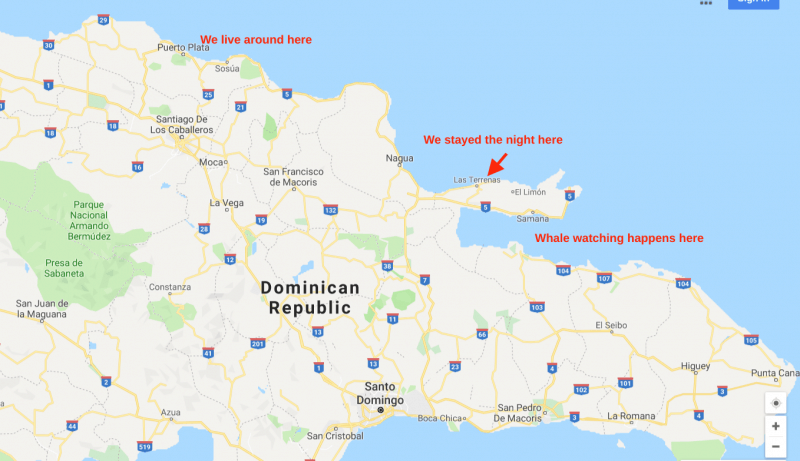
We stayed the night at a sweet little hotel in Las Terrenas. We were glad to see Las Terrenas because it was option #2 for a town to live in while in the DR. It came highly recommended by the expats and it was a major contender for our home community until we found our comfy apartment by the pool/sea. Las Terrenas was pretty chaotic, larger than our town and frankly, a little more crazy. The beach was not as nice and it was, over all… meh. We were glad we took a pass on it.
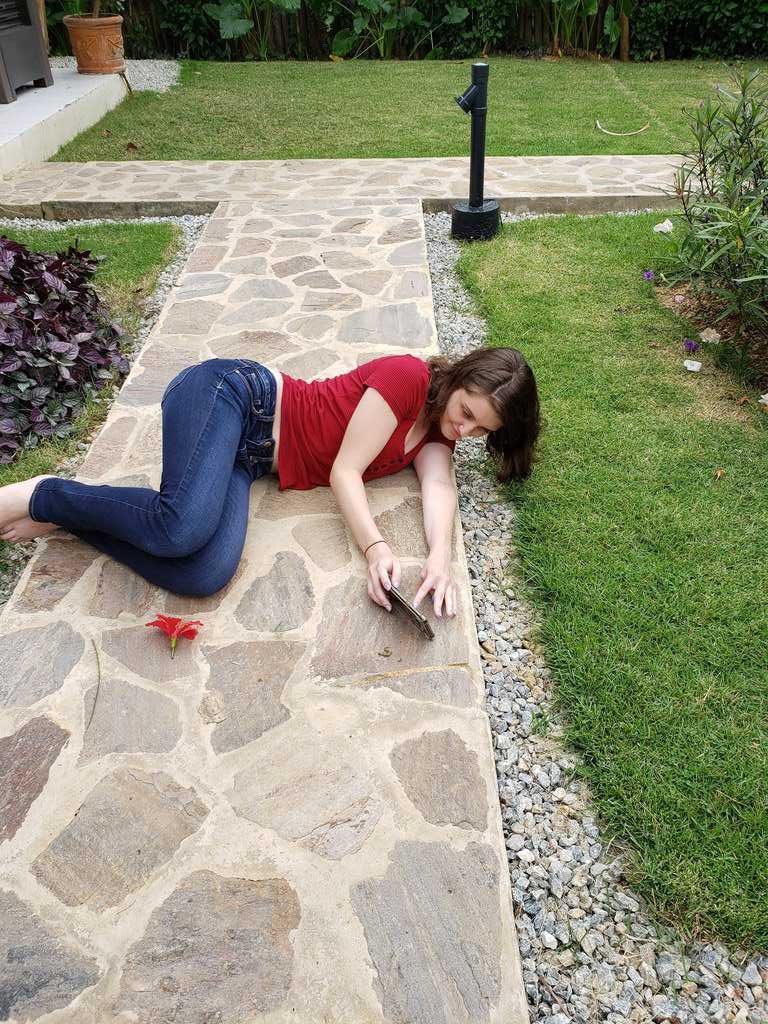
The next morning we got up way too early and headed to Samaná, which is the launching point for all the whale watching boats. We checked in, got our boat briefing, they handed out seasickness wrist bands and off we went.
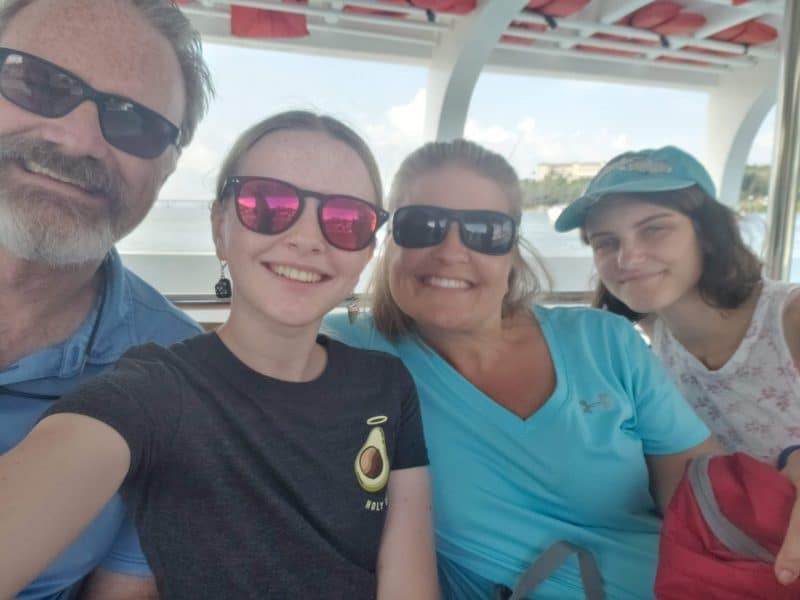
I am reminded that I love boat trips. On calm waters, that is. Long-time readers will remember my epic meltdown on a boat in Panama, a mere weeks into our Worldschooling journey. But I prefer to remember the happier times on boats: I love the exploratory nature, the lower risk of a head on collision with a car coming at you in your lane, and the “what will we find over here??” attitude when looking for whales. We’d done it once before while swimming with whalesharks in Mexico, which was one of our Top Ten Moments of Worldschooling. On this day of whale watching, we were blessed once again with sunny skies and small waves. No meltdown for Mommy today, kids! Maybe tomorrow!
I am also reminded that I have a strong stomach and rarely get seasick. The fam took Dramamine and wore seasickness wristbands and that seemed to do the trick. No one got sick from seasickness. I had the wrist bands but didn’t seem to need them. I think it helped that I was on the top deck in the breeze, asking a million questions of our boat captain. I was too busy watching whales to be seasick.
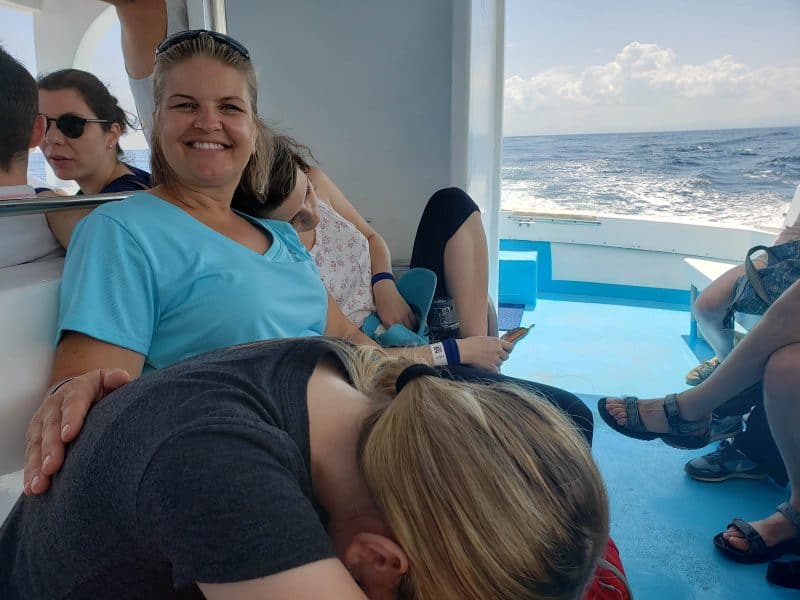
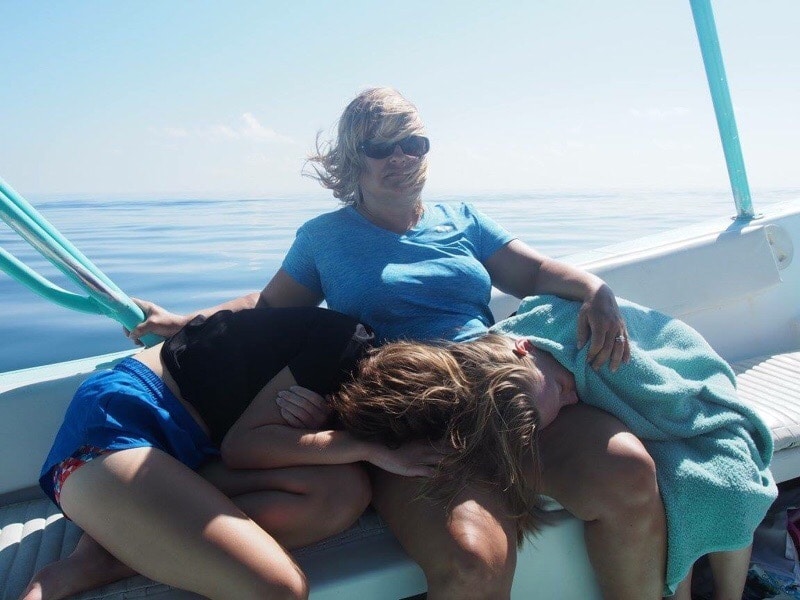

Then, bam… we saw whales! We saw a baby, a mama and a “male escort” as they called him. This male escort is not the baby’s daddy. We asked what his role is and evidently he likes to hang out with a female whale as a way to butter her up for the future. It’s kind of a “take my number, let’s talk later?” thing. At times he got a little pushy and Mommy Whale seemed a little unimpressed. If whales could text he would have sent her a selfie, probably with no shirt on.

Just a note on this company we went with: they were fantastic. Kim, the captain, was incredibly knowledgeable and personable. This was not the kind of tour where the tour guide says the same thing every day and it becomes robotic and monotone. It was as if Kim was actually going on a whale watching expedition for educational purposes and we just happened to come along. The information she gave out was extremely interesting yet delivered in a conversational tone, like we were having coffee. I was enthralled.
Kim’s staff were amazing as well. There was a naturalist on board who focused on taking pictures. Another staff member recorded data of which whales we saw. There were 3-4 other staff members who passed out crackers and candies, gave people baggies and Kleenex if they were getting sick and even passed out hair bands if the sickies needed to pull their hair back while utilizing the baggie. I was impressed. There were several people utilizing the seasick tools on our boat. I’ve heard we got off easy with the waves that day, but the niñas report their high level of dissatisfaction with being in the presence of barfing. Haley saved half of her Dramamine and her hair band from the boat as momentos. She’s sentimental like that.
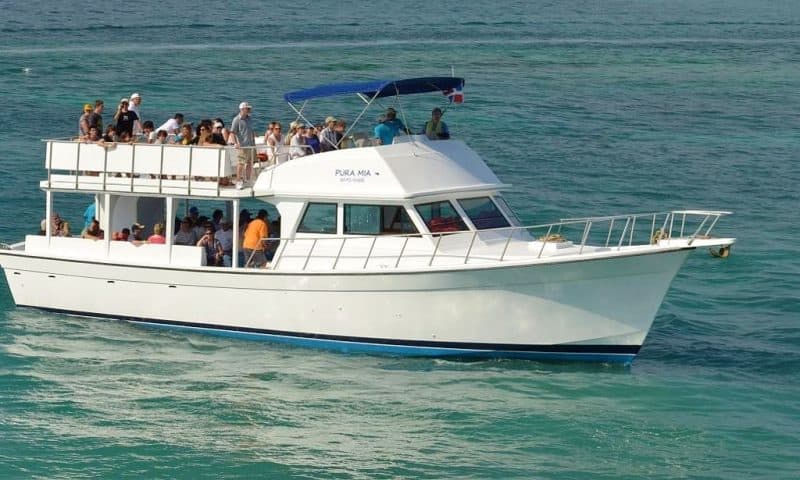
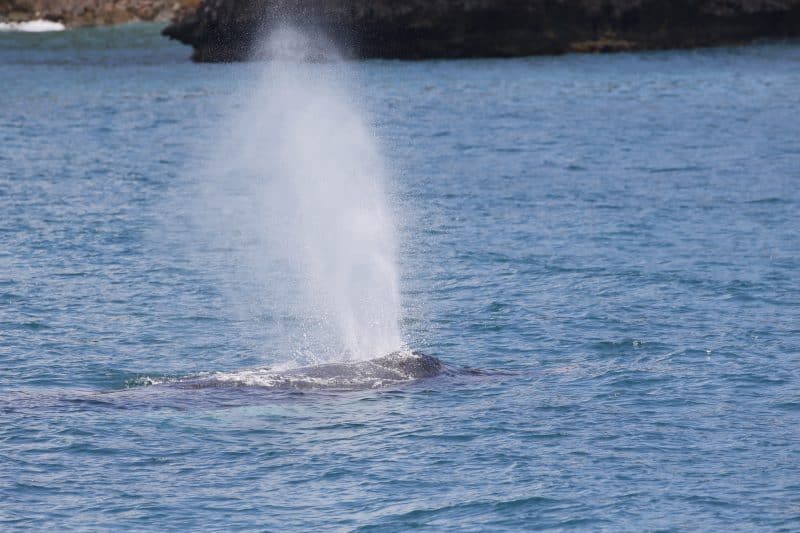
But lest you think this blog post is over, you would be mistaken. I can’t let you go without a few fun facts we learned about the whales.
They are protected in this area, where the mamas come to have their babies. They like the warmer waters of the Caribbean but only in the winter. Whale season in this area is from mid January to late March. While they’re down here, the mamas do not eat, as they do all their feeding on the fish in the North Atlantic. They leave to go back north when they get hungry and when their babies are strong enough to make the journey. Who knew that whales do intermittent fasting!? They are trend-setters, those humpbacks!

The whales in this area are protected and the sanctuaries have also partnered with some other coastal areas to protect them elsewhere too. It’s not enough to protect them where they have babies, you have to protect them where they eat too! This was so interesting to me. And due to the cooperation between the agencies, they actually track the whales from their eating and mating locations to their birthing locations and back again. They keep stats on how long it takes them to make the commute and generally how long they spend in each place.
We learned that there are some strong regulations in place in this area about whale watching. Boats can not approach the whales at a high rate of speed, they must stay at a distance, and only 3 boats can be near the whales at any given time. Boats can stay for 30 minutes and then they have to leave to allow other observers the opportunity. As we were watching, another boat approached the whales at a higher speed than was recommended and remained too close. Our captain reported them and our boat expressed dissatisfaction with a horn. We got the message across and the offending boat backed off.
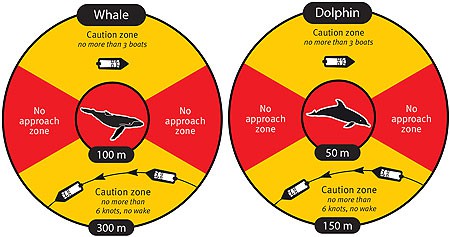
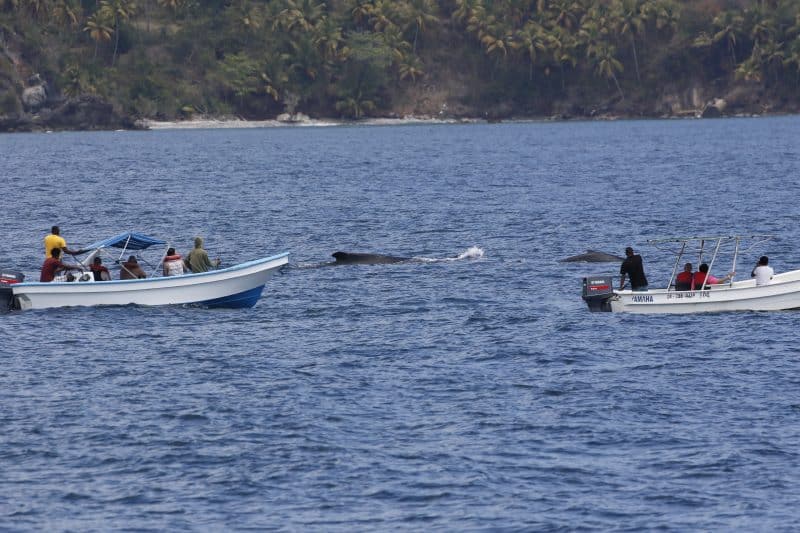
Marine biologists get a lot of their whale knowledge from the whales they have been able to tag with a satellite tracker. But they also have individual numbers for the whales they have observed and they share data with other agencies. How can they tell all these whales apart? Well, fun fact…the underside of a whale tail is unique to each whale. It’s like human fingerprints. So when marine biologists capture an image of the tail, they study it to see if it matches a previously identified whale. I asked Cap’n Kim if there is a master database that all researchers use and she says they use Facebook. Thanks, Mark Z! Researchers number the whales too. The ones we watched on our boat were called “Mother Calf Pair #32”.
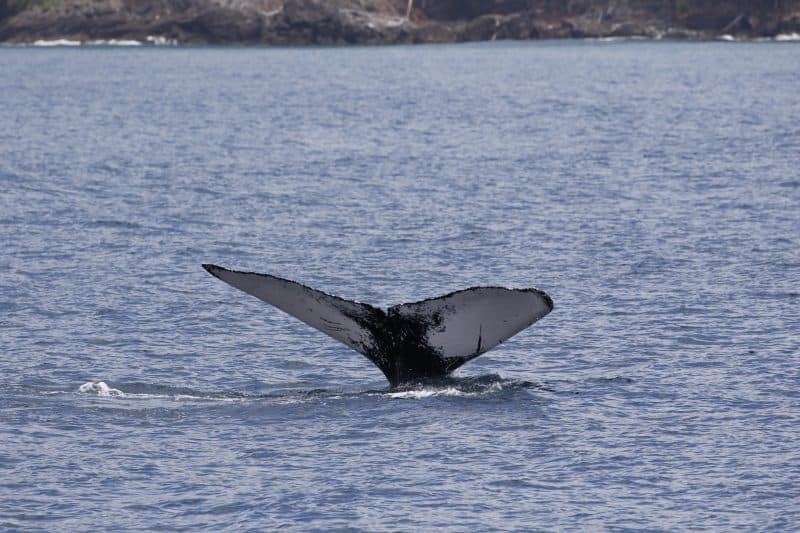
But it’s not all good news for these amazing creatures. Japan has recently withdrawn from the International Whaling Commission and will resume selling whale meat to it’s eager consumers. Iceland has announced it will be killing 2000 whales in 2019 and exporting the meat to… you guessed it… Japan. Even before their official withdrawal, Japan was the symbolic bully on the whaling playground, as they continued to have a policy that killing whales was OK “for scientific purposes” and then they would sell the meat.

Well, what can we do about the plight of our whale friends?? Our guide explained that the almighty dollar speaks volumes. She says that the best thing we can do is to show local communities, like Samaná, that there is economic opportunity in protecting the whales, moreso than in eating them. She recommends that whenever you have an opportunity to see marine life in it’s natural setting – such as whale watching – please spend your money on it, as it’s a much better alternative for the local areas. We were happy to have contributed in this way.

If this blog post has only whet your whale appetite (for viewing, not eating – looking at you, Japan), you might enjoy this video from some of our favorite YouTubers who are sailing their way around the world. Coincidentally they went whale watching recently too, but they got to swim with them. Sounds like a new item for my bucket list.
